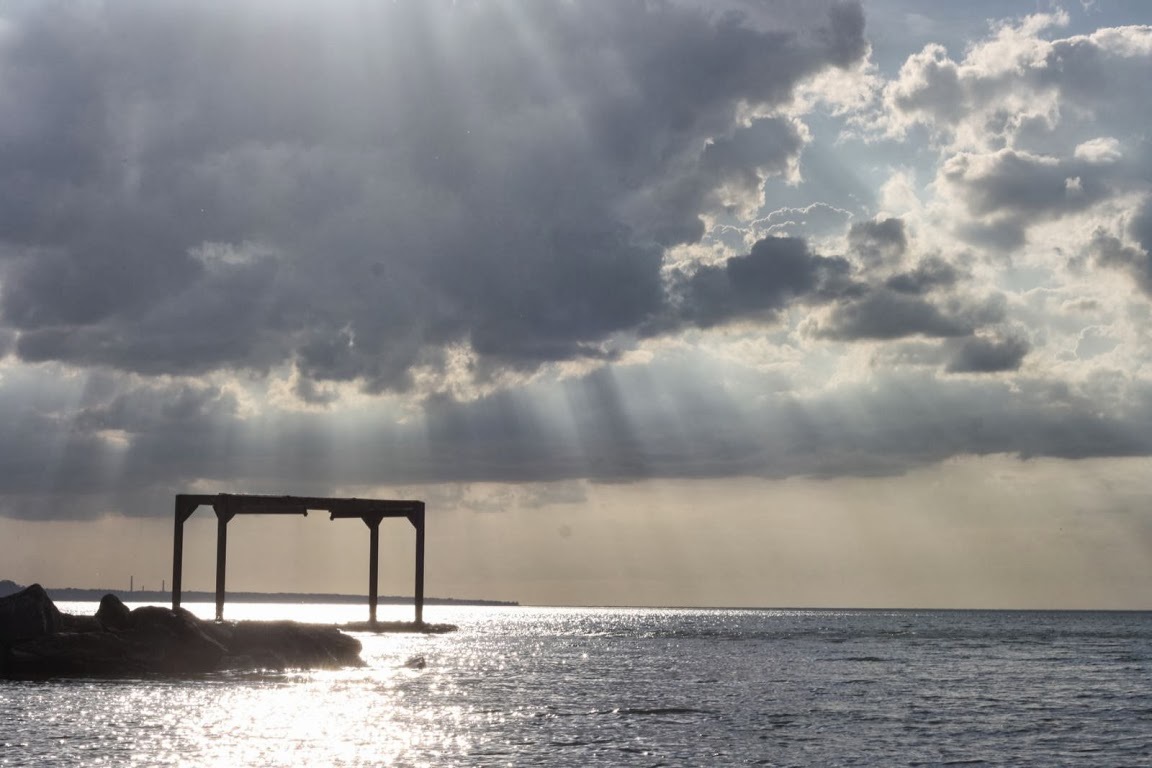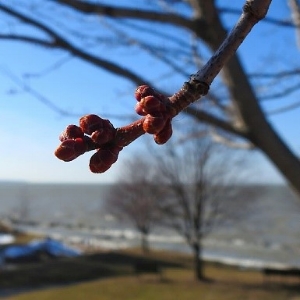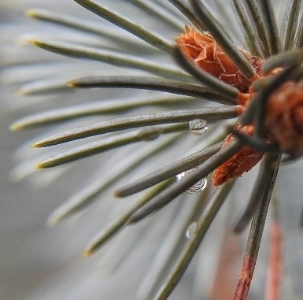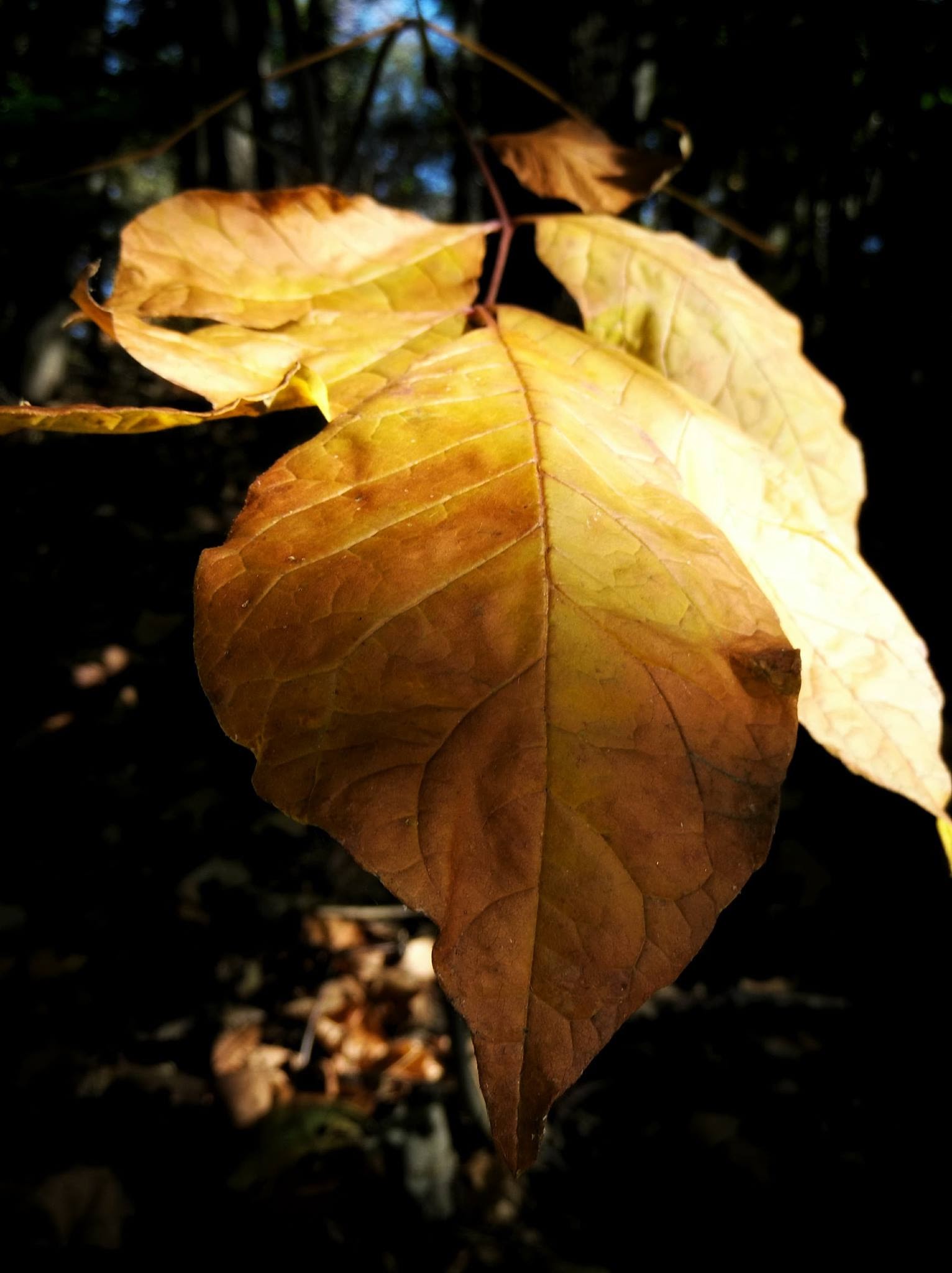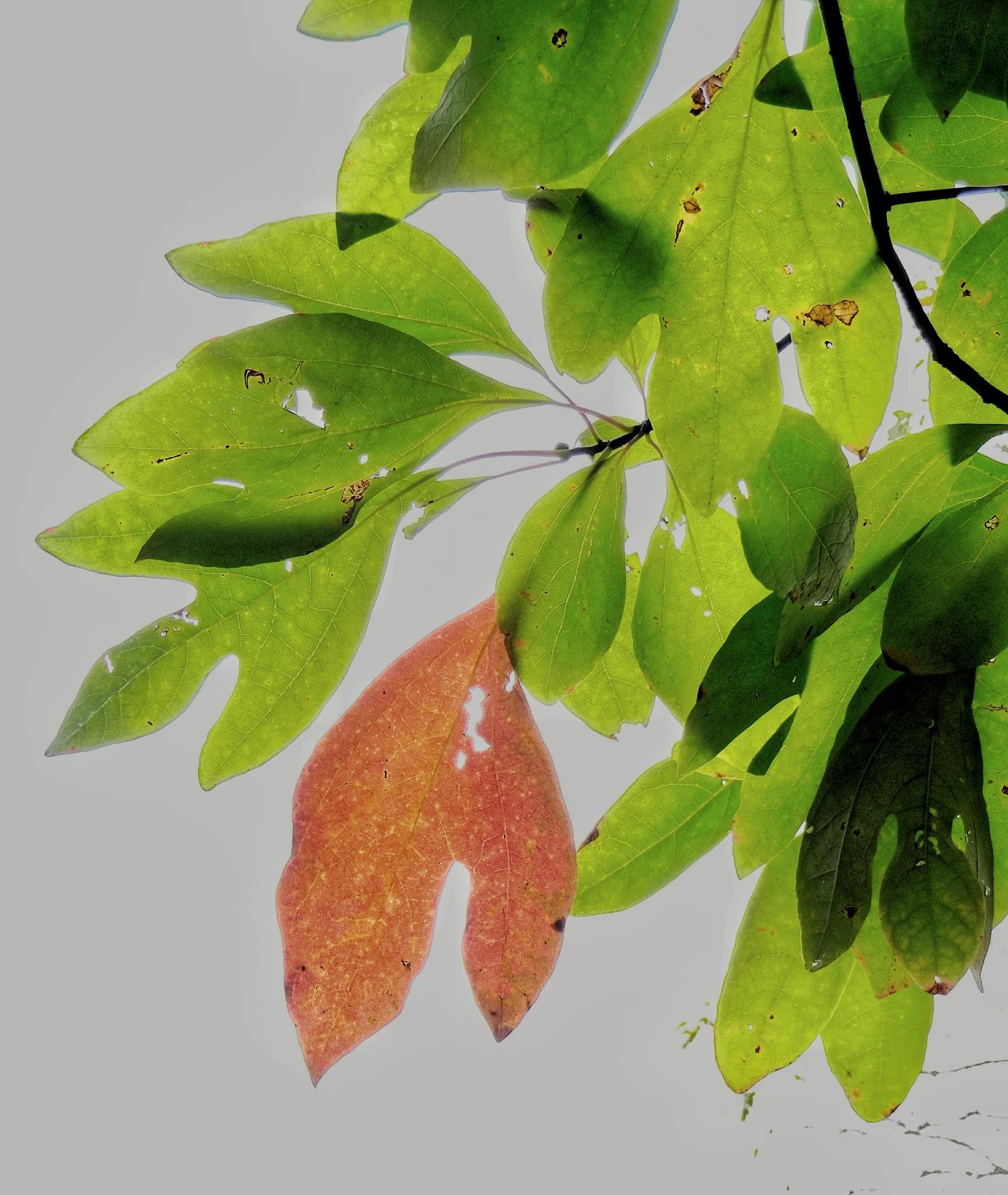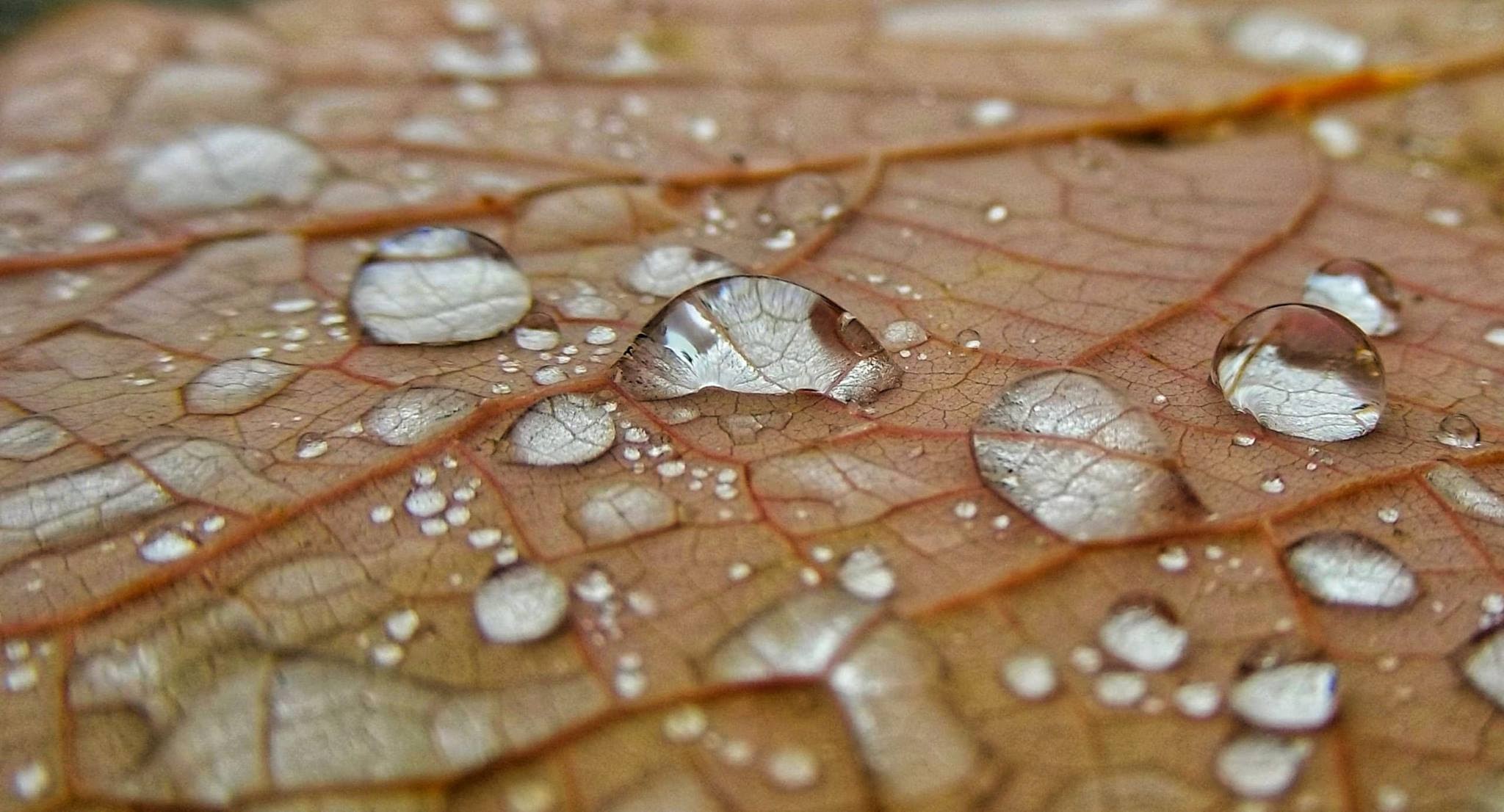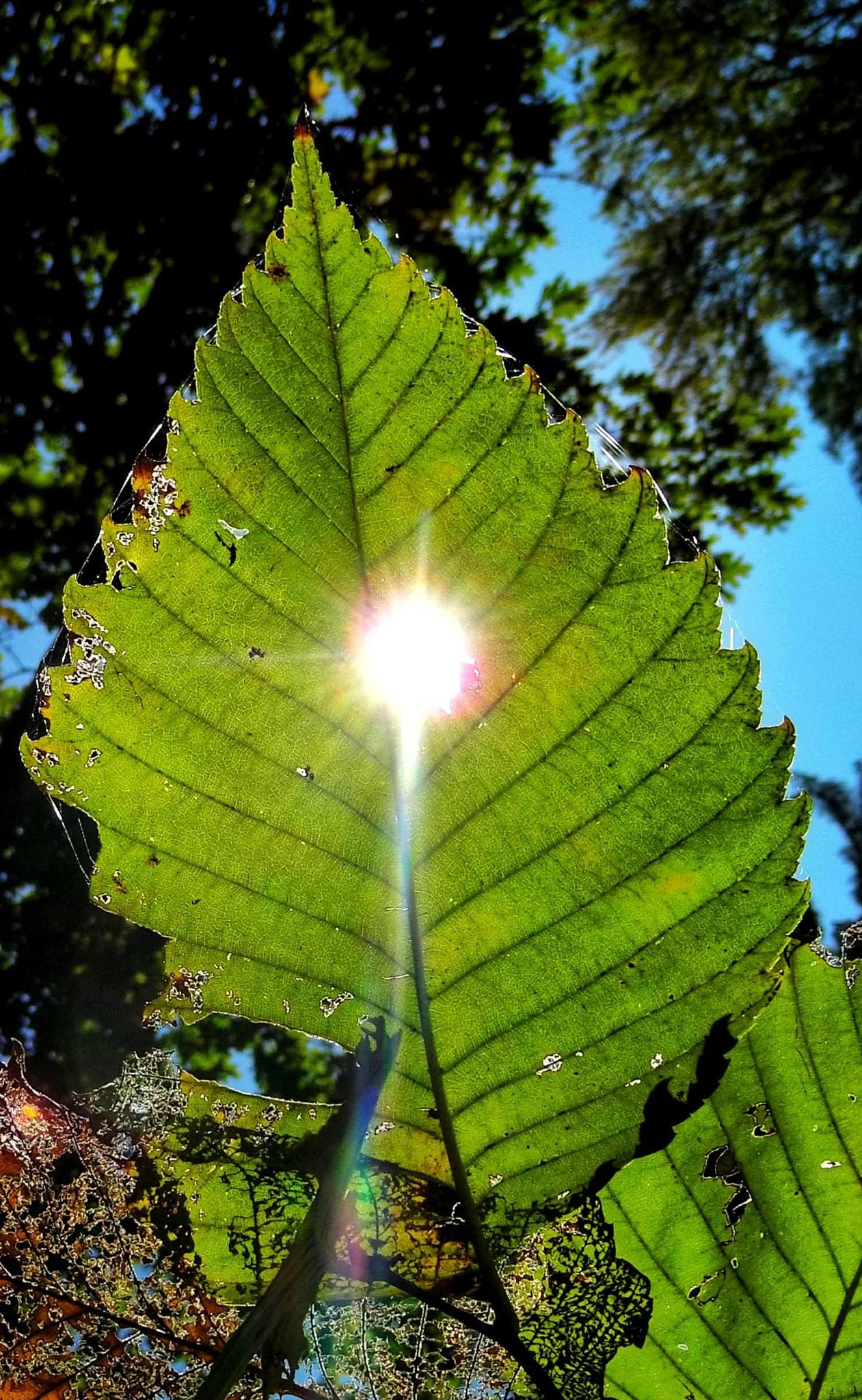Arborist’s Corner
Welcome to the Arborist’s Corner! This is the new home of information regarding the urban forest within the City of Rocky River. We will post updates on the efforts of our City Forester, interesting tidbits regarding trees, and spotlight new species that you may incorporate in your home landscape. Be sure to check back often for updates!
Arborist's Corner - Spring 2018
Arbor Day Scavenger Hunt
The benefits of trees go well beyond giving us shade and producing oxygen. Did you know that having trees on your property increases the value of your home? Join us on an Arbor Day scavenger hunt throughout the parks of Rocky River while learning the benefits associated with different species and sizes of trees. Track your progress on our record sheet, correctly identify the trees, and enter it for a chance to win a prize!
Submit a completed record sheet to the front desk at the Rocky River Civic Center by 4pm on Sunday, May 13th, to be eligible to win an Arbor Day prize!
To learn the value of your trees at home, visit: www.treebenefits.com
Tree Lawn Tree Planting Update 2018
This April we began planting trees throughout the city in tree lawns, parks, and other public spaces. The installation of the trees is being performed by Locke’s GoGreen of Oberlin, and staff of the Parks Department.
We are adding approximately 80 trees of many different species to our urban forest. The streets eligible for free tree lawn trees this year are Bonnie Bank, Eldora, Maplewood, Scenic, Snowflower, Westway, and Wildflower. Additional trees will be planted at City Hall, Linden Park, Martin Park, Morley Park, and on tree lawns throughout town at the special request of property owners. These trees are being purchased by the property owner through our program to invest in a tree on their tree lawn instead of waiting for free trees for their street.
After installation, the trees will be fitted with a tree watering bag and the adjacent property owners are responsible for filling the bags weekly. We rely on the property owners to help with watering to ensure the best start possible for the new trees. Failure to water the tree during the first year after installation will likely lead to the morality of the young tree. All new tree lawn trees will receive watering bags their first year as part of our initiative to improve survival rates of our young trees. This initiative has proven to be very effective thus far. This fall, the city will remove the watering bags and install tree guards to protect the sensitive trees from deer damage.
Residents may contact City Arborist Rich Snyder at 440-356-5630 or rsnyder@rrcity.com if you would like to request a tree for 2019, concerns regarding the trees, or with questions regarding the tree planting process.
Interested in a Tree Lawn Tree??
Each year the City selects one to two streets in each ward for free tree lawn trees, but even if your street is not chosen, it doesn’t mean that you cannot get a tree lawn tree! As part of our annual program residents have the option to purchase a tree at a discounted price for planting on the tree lawn. The species of tree is dictated by the Master Planting Plan for each street. Included in the cost is the tree, planting, staking, and mulch. The city will then maintain the tree with help of the adjacent property owner in watering. If you are interested in a tree lawn tree beginning in the 2018 season, please contact the City Arborist at 440-356-5630 or the Safety Service office at 440-331-0600.
Growing Degree Days
Do you ever wonder how to know when the Forsythia will begin to bloom in the Spring or when you may begin to see certain plant pests? Check out the Growing Degree Days calendar at https://www.oardc.ohio-state.edu/gdd/. This handy calendar developed by The Ohio State University utilizes research on a variety of species to develop the number of Growing Degree Days (GDD) are necessary for an event to occur in that species.
GDD are a measurement of the growth and development of plants and insects during the growing season. Development does not occur at this time unless the temperature is above a minimum threshold value (base temperature). The base temperature varies for different organisms. It is determined through research and experimentation. The actual temperature experienced by an organism is influenced by several factors. These factors affect growth and development. For instance, depending on the weather, an organism’s temperature may be a few degrees more or less than that recorded. An organism may spend its time in the shade or under direct sunlight. The fertility and nutrient content of the soil directly affect the growth rate of insects and plants. The presence of weeds and precipitation may indirectly influence development. Due to these factors and some other scientific considerations, a base temperature of 50 degrees Fahrenheit is considered acceptable for all plants and insects.
We Need Your Help!
Our staff is always on the lookout for potential risks in tree lawn trees and at the parks, but if you happen to notice a tree or limb you believe to be a hazard, please contact our Arborist at (440)356-5630, and we will take a look.
In the photo below, Steve Baker and Tyler Stefancin of the Parks Department successfully removed a large dead limb overhanging a walkway at Rocky River Park.
Pest Watch List
Many people in Rocky River are familiar with the Emerald Ash Borer. This beetle was first identified in Ohio in 2003 and over the past 15 years, it has left a path of destruction in its wake. There are few remaining ash trees throughout our community and although we have taken action to increase the diversity of our urban forest, it is difficult not to wonder what may have happened if we had spotted it sooner. As a new feature of the Arborist’s Corner, I will identify a different potential threat to our trees and other plant life. While some may be as dangerous as the Emerald Ash Borer, others may merely be a nuisance to our landscape. It is through our vigilance and education that we can work together to combat these hazards to our community.
Spotted Lanternfly
Lycorma delicatula
The spotted lanternfly is an invasive planthopper that was first discovered in the United States in Pennsylvania the fall of 2014. It is native to China, India, Vietnam, and introduced to Korea. Since that point there have been individual confirmed sightings in Delaware, New York, and most recently Virginia. The spotted lanternfly prefers to feed upon Tree-of-Heaven (Ailanthus altissima), which is considered a plant pest by many, but also targets maple, willow, and fruit trees. Grapes are also highly susceptible to the nymphs. The feeding preferences are much more broad as nymphs, with adults feeding primarily upon willow and tree-of-heaven.
The egg masses of the spotted lanternfly overwinter on flat surfaces with gray mud-like coverings until hatching in the spring and maturing in 4 stages. Early nymphs are black with white spots, becoming more red in later stages. They will generally become adults in mid-summer and lay eggs in late summer before dying out in cold temperatures.
If you suspect that you have found the spotted lanternfly in Ohio, please contact the Ohio Department of Agriculture at (614) 728-6270.
Photo Credit: Lawrence Barringer, Pennsylvania Department of Agriculture, Bugwood.org
Source: https://bygl.osu.edu/index.php/node/971
http://forestinvasives.ca/Meet-the-Species/Insects/Spotted-Lanternfly#73247-manage
Meet Our Staff!
We will be showcasing and interviewing a different member of our staff in upcoming editions of the Arborist’s Corner. Each member of our staff works diligently to maintain the urban forest and parks within Rocky River, so be sure to say “HI” when you see them out and about!
Bob Koenig, Westlake, OH
Bob is a lifetime resident and former City Council candidate of Westlake, who joined the City of Rocky River in 1998 after almost 20 years at Donn Corp. He is a veteran of the Army National Guard and a current member of the US Coast Guard Axillary who became full time with our Parks Department in 1999.
What is your favorite part of your job and why?
“Cutting grass. It just is. I also like to put a nice edge on sidewalks because it gives them the nice country club look.”
If you could have any job in the City, what would it be and why?
“Police Boat Captain. I think I would do a good job and I could put my Master Captain’s License, Merchant Mariner’s Certificate, and 200-Ton Towing Endorsement to good use.”
What is your favorite City Park?
“Linden Park, because it has a lot to offer. A sledding, hill, soccer fields, baseball/softball diamond, and tennis courts. I really like to make it look nice for special events.”
What attraction would you like to add to the City for our residents and guests?
“I would like to see a concession stand at Bradstreet’s Landing. Sometimes the City guys get hungry and it would be nice if there was a place there to stop. I would also like to see Paddleboat, Paddleboard, Canoe and Kayak rental there.”
Tree Spotlight
Cercis canadensis
Eastern Redbud
Redbud, also known as Eastern Redbud or Judas Tree, is abundant in the southern two-thirds of Ohio, with scattered distribution in the northern one-third of the state. It heralds the arrival of spring with its showy, lavendar-pink flowers that typically open in April, long before the foliage emerges.
Redbud is a native of the entire eastern half of the United States except for New England, but is not found in Canada, as its scientific name implies.
This ornamental tree is rapidly growing and usually multi-stemmed in the wild, having a vase shape with a rounded crown that reaches about 20 feet tall and 20 feet wide at maturity, when found in the open. However, since it is often located at the edge of woodlands, it commonly has a leaning growth habit, trying to grow into as much sunlight as possible.
As a member of the Bean Family (Fabaceae), the redbud is also related to honeylocust, Kentucky coffeetree, black locust, and wisteria. Many of this family's members are important vegetable crops as well as ornamental plants.
Planting Requirements - Redbud prefers deep, moist, organic, well-drained soils, but adapts to many less-than-favorable soils of either acidic or alkaline pH as long as they are not wet. It grows most rapidly and flowers most prolifically in full sun if adequate moisture is available during the heat of summer, but it is often found in partial sun to partial shade in nature. It can grow in zones 4 to 9, but occurs naturally in zones 5 to 9.
Potential Problems - Redbud grows rapidly and often lives about twenty years before it begins to decline or die, especially in urban situations where poorly drained, heavy clay soils predominate. Trunk canker is a serious disease and is evident as sunken depressions in the bark of large branches or trunks, which often begin to heal before the tree eventually dies. Verticillium wilt and root rot are two additional, serious pathogens that affect the roots often due to wet soils but become evident as entire branches rapidly die. Some pests such as scales may also cause problems, but the tree diseases cited above wreak havoc on the redbud and limit its lifespan.
Credit: http://forestry.ohiodnr.gov/redbud
BE SURE TO SEE SOME OF THE REDBUD TREES THAT WERE PLANTED ON THE WESTERN PORTION OF AVALON DRIVE IN 2017 AND PARKVIEW AVENUE IN 2015!
River Tree Photo-Op
Do you have a special photo of a tree in Rocky River? Submit it to rsnyder@rrcity.com for a credit on the Arborist’s Corner!
Photo Credit: Jeffery Paul, Lakewood, Ohio
“Those who contemplate the beauty of the earth find reserves of strength that will endure as long as life lasts. There is something infinitely healing in the repeated refrains of nature—the assurance that dawn comes after night, and spring after the winter.” Rachel Carson
Arborist’s Corner - Fall 2017
The Right Tree, in the Right Spot, Done the Right Way…
The benefits of a thriving urban forest are countless. From aesthetic value to stormwater reduction, carbon sequestration, and home energy reduction from shade and protection from the elements, trees help us help us in our everyday life more than we realize. It is the responsibility of the manager of the urban forest within a community to maximize the benefits of those trees while preserving the health, safety, and well-being of its residents and visitors. The most effective way to maximize those benefits is by having the right tree, placed in the right spot, and maintained correctly. That is the task that we have undertaken within the City of Rocky River.
Effective management of a community forest begins with a good plan. A good plan requires us to know where are and where we would like to be. Rocky River has long been a city that valued trees. Over the past 15 years, trees have been planted annually in great numbers based on an existing master planting plan. Many tried and true species, such as maples, lindens, and pears were planted widely throughout the city…then came the Emerald Ash Borer. As ash trees were removed by the thousands, researchers and city managers realized that a monoculture of trees within a community was a disaster waiting to happen. That brings us to where we are.
Rocky River in 2015 was comprised of approximately 75% of species in the Acer, Tilia, and Pyrus (maple, linden, and pear) genera. Not only that, but many of the trees within the community were in locations not well suited for the species, such as under utility lines, or in narrow tree lawns. We knew that to maximize the benefits of the trees to the community and protect our urban forest from we had to reevaluate how we managed out tree population, especially in out right-of-ways. With the help of ODNR Urban Forestry and the Tree Commission Academy, we learned a better way to make sure we were putting the right tree in the right spot, and how to maintain those trees in a successful manner to maintain and grow our urban forest to where we want to be.
In the fall of 2015, we began assessing our tree lawns and the trees they contained. To better know which tree was best suited for each site, tree lawns were evaluated on a street-by-street or sometimes block-by-block basis. Research has shown that the most important factor to the sustainability of a tree lawn tree is the soil. Different trees can tolerate different soil conditions and as part of the assessment we collected data on tree lawn width, soil compaction, soil layers, and likelihood to receive damage from snow/salt spray. Additionally, the presence of overhead utility lines was taken into consideration. All those factors were then compared to a list of nearly 200 species that were suited to this hardiness zone and a species best suited for the location was chosen. In an effort to increase diversity, species were often divided by block instead of by street.
During the process of collecting data on the tree lawns, information was collected on the existing tree lawn trees as well including the exact location of the tree in relation to the house, the species of the tree(s), diameter, overall condition, maintenance requirements, and whether or not there was an existing sidewalk conflict. This information helps to prioritize the work to be completed annually and develop our pruning schedule for upcoming years. High risk trees were scheduled for immediate removal or trimming based on need and streets with a high percentage of available spaces were scheduled as high priority for new tree lawn trees. This information will also be used in a new program that should be incorporated within the next couple years to create work order and track work completed by trees on an individual tree lawn basis. That software information may then be used in a program called iTree developed by the US Forest Service to help us better evaluate our urban forest and even quantify the value of our community forest. This information will help us show progress moving forward.
Urban forest management, like nature, must evolve to succeed. As changes occur in the world, so must we change our approach in preserving the forest within our community. For many years, Rocky River has chosen to place substantial value on our trees, but now we have chosen a path to sustain them to maximum benefit for generations. Along the way there have been and will be issues, but as new research comes forward and we continue to learn, we will adjust and continue forward for the betterment of all.
Tree City USA
We are pleased to announce that the City of Rocky River has been recognized with Tree City USA for the 33rd consecutive year! Additionally, through our urban forestry initiatives, such as continuing education and the tree-watering bag campaign, the city received a Tree City USA Growth Award for the 2nd consecutive year. Representatives from the city accepted the awards at the Tree City USA awards banquet on May 10th, in Aurora, Ohio.
Tree Lawn Tree Planting Update
This past April, were planted throughout the city in tree lawns, parks, and other public spaces. This is an annual cooperative effort by the City, The Rocky River Beautification Committee, and our residents to increase our urban tree canopy and further beautify our streets. This year we added approximately 120 trees of many different species to our urban forest. The installation of the trees was performed by Green Impressions, of Sheffield Village, and staff of the Parks Department.
After installation, the trees were fitted with a tree watering bag and the adjacent property owners were responsible for filling the bags weekly. We rely on the property owners to help with watering to ensure the best start possible for the new trees. Failure to water the tree during the first year after installation will likely lead to the morality of the young tree. All new tree lawn trees will receive watering bags their first year as part of our initiative to improve survival rates of our young trees. This initiative has proven to be very effective even after our first year. This fall, the city will remove the watering bags and install tree guards to protect the sensitive trees from deer damage.
Residents may contact City Arborist Rich Snyder at 440-356-5630 or rsnyder@rrcity.com with concerns regarding the trees, or with questions regarding the tree planting process.
Tree Lawn Tree Tidbits
- Since 2010, we have planted 528 street trees and approximately 40 trees on public property
- In 2017, 26 different species of trees were planted from 13 different taxonomic families in an effort to increase diversity within the urban forest
- To calculate the gallons of water a new tree needs weekly, multiply the diameter by two and add five.
(i.e. A 2-inch tree needs 15 gallons weekly)
- Deer rubbing on small trees is their way to indicate a male’s territory and signal females and young males that he is in the area
Interested in a Tree Lawn Tree??
Each year the City selects one to two streets in each ward for free tree lawn trees, but even if your street is not chosen, it doesn’t mean that you cannot get a tree lawn tree! As part of our annual program residents have the option to purchase a tree at a discounted price for planting on the tree lawn. The species of tree is dictated by the Master Planting Plan for each street. Included in the cost is the tree, planting, staking, and mulch. The city will then maintain the tree with help of the adjacent property owner in watering. If you are interested in a tree lawn tree beginning in the 2018 season, please contact the City Arborist at 440-356-5630 or the Safety Service office at 440-331-0600.
“Recipe” For Success
One of the biggest limiting factors for the success of trees in the urban landscape is poor soil quality. In nature, there is a constant incorporation of organic matter into the soil from leaf litter and decaying plants. Over time, this organic matter mixes with parent materials in the earth to create the topsoil necessary for the survival or plants and trees. In the urban setting, this necessary topsoil is often lacking or not present in a depth for the trees to thrive.
During construction of homes or streets it is quite common to remove or disturb the existing topsoil and what remains after a blend of parent material, topsoil, and fill dirt with a thin layer of topsoil to maintain the turf. The thin layer of topsoil is enough to sustain the grass, but not enough to promote root growth and nutrient uptake by trees. Another factor that adds to the lack of organic matter in the soil is the cultural practice of removing lawn clippings.
Within the City of Rocky River, we are utilizing a technique introduced to us by Alan Siewert of the ODNR Urban Forestry Department to incorporate and speed up the process of developing better soils in an urban setting. Soils around existing trees are disturbed and organic matter is incorporated into the soil. A layer of organic matter such as mulch is then added and refreshed on an annual basis.
A simple method of this may be adopted by residents by mulching around your trees annually. As the wood chips in the mulch break down, the organic matter is incorporated into the soil around the root system. This creates a positive environment for root development and also helps the tree by eliminating mechanical damage from landscape equipment to the tree. It is very important to avoid mulching the stem (trunk) because it can lead to other issues including stem-girdling roots and decay.
Tree Spotlight
Nyssa sylvatica
Blackgum, Sourgum, Black Tupelo
Nyssa sylvatica is native to the entire Eastern United States, and is found in all of Ohio except for the driest counties in the northwestern part of the state. Also having the common names of Black Gum, Sour Gum, and Pepperidge, this tree is known for its glossy dark green summer foliage and outstanding autumn foliage colors.
In youth, the tree is often pyramidal, but this is not always the case. At maturity, the growth habit is upright oval and can be massive under the right conditions. Fruits are greedily eaten by wildlife in late summer and early autumn, about the time that the leaves are beginning to color and slowly abscise.
Black Tupelo is variable in its mature height when found in the open, but may reach a height of 60 feet by a width of 25 feet; some specimens are notably shorter and broader, with an irregularly shaped canopy, while others top out at 80 feet or more in height. Black Tupelo is a member of the Tupelo Family, with other members of the genus Nyssa as its close relatives, and the Dogwoods as distant relatives.
Planting Requirements - Black Tupelo strongly prefers moist, well-drained, rich, deep, acidic soils, but adapts surprisingly well to dry, average, alkaline soils, but with reduced growth vigor and lighter-colored or chlorotic leaves. It is found in zones 4 to 9, and grows best in full sun or partial sun, but adapts well to partial shade, especially in youth.
Potential Problems - Black Tupelo has several minor diseases and pests, the most notable of which is black leaf spot. Stunting of growth and chlorosis of foliage will occur if this species is planted in high pH (alkaline) soils, while this species will thrive with a medium growth rate when sited in acidic, moist, well-drained soils.
Credit: http://forestry.ohiodnr.gov/tupelo
BE SURE TO SEE SOME OF THE NEW BLACK TUPELO TREES THAT WERE PLANTED ON THE EASTERN PORTION OF AVALON DRIVE THIS PAST SPRING!
River Tree Photo-Op
Photo Credit: Jeffrey Paul
Lakewood, Ohio
RRHS Class of 1986
Do you have a special photo of a tree in Rocky River? Submit it to rsnyder@rrcity.com for a credit on the Arborist’s Corner!
“Those who contemplate the beauty of the earth find reserves of strength that will endure as long as life lasts. There is something infinitely healing in the repeated refrains of nature—the assurance that dawn comes after night, and spring after the winter.” Rachel Carson
Arborist’s Corner - September 2016
Welcome to the Arborist’s Corner! This is the home of information regarding the urban forest within the City of Rocky River. We will post updates on the efforts of our City Forester, interesting tidbits regarding trees, and spotlight new species that you may incorporate in your home landscape. Be sure to check back often for updates!
Volunteers Help with Ash Trees at Linden Park
In August, the Service Department and the Recreation Department were assisted with removals of Ash trees at Linden Park by a group of volunteers from the First Baptist Church of Mount Vernon, Kentucky. With the help of this group, we were able to remove eight Ash trees and trim other trees around the playground at Linden Park. We plan on replacing many of those trees with a variety of trees this next spring.
Mulch Volcanoes
While travelling through town, I have noticed many instances where trees have been mulched incorrectly to become “volcanoes.” A common misconception is that more mulch is better when it comes to trees, but deep mulch piled up against the main leader creates problems in itself. Over-mulching often leads to stem girdling roots and other issues. As you can see in the photo below, proper mulching involves using a 2-3inch layer of much around the tree that leaves the root flare exposed.
Tree Guards for Young Trees
As part of our initiative to protect young trees in the city, we will be removing the watering bags from young tree lawn trees during the month of October and exchanging them with mesh guards to preserve the delicate trees from deer damage. As many of you are aware, deer have been the cause of much damage to young trees in the past, but this new protocol the trees seems to be helping preserve our investment within the urban forest for the future. This measure is highly recommended in the private landscape as well on trees up to six inches in diameter.
Tree Lawn Tree Trimming
As part of our urban forestry program, this winter we will be beginning our new maintenance routine for tree lawn tree trimming. The goal of the program is to have a section of each ward have trimming and other maintenance performed on the street trees so that within an 8 year period, all street trees in the city will be addressed. Annual removals and trimming of hazardous trees and other issues will still be addressed as they arise.
Private Trees in the Right-of-Way
We could use your help in protecting the safety of our residents and private property within the city. If you are a property owner with a tree in your front yard that has limbs hanging low over the sidewalk or out into the street, please keep those limbs trimmed. The recommended clearance over the sidewalk is 8 feet and the clearance over the street is 14 feet. In addition to protecting our residents and their property, this also reduces the likelihood that the tree will suffer broken limbs from passing vehicles. With the combined effort of our trimming of tree lawn trees and your help with private trees, we can develop a safe and appealing right-of-way.
Tree Spotlight
Football season is upon us and what better tree to spotlight than the Ohio Buckeye! There are quite a few Buckeye trees along Wooster Parkway, south of Detroit Avenue.
Ohio Buckeye
Aesculus glabra
Zone: 4-7
Growth Rate: Medium
Mature Spread: 30'
Mature Height: 60'
Shape: Rounded
Sunlight: Full sun / Part shade; Full shade when mature
Soil Type: Moist, well-drained; variable pH; rich and deep
Aesculus glabra, the state tree of Ohio, is found primarily as an understory tree in the western half of Ohio, where the soils are more alkaline in pH. However, it is scattered throughout the eastern half of the state, except in extreme northeastern and extreme southeastern Ohio. Its lightweight wood is used in the production of artificial limbs, and the holding of a "buckeye nut" in one's pocket is considered good luck. A native of the Midwestern and Great Plains states, trees found in the open may reach 60 feet tall by 30 feet wide, but as a native understory it is often half that size. As a member of the Horsechestnut Family, it is related to other Horsechestnuts and Buckeyes, including man-made hybrids between the species.
Fun Fact
As a result of a political remark made by an opposition newspaper, a log cabin decorated with raccoon skins and a string of buckeyes became the symbol of General William Henry Harrison’s presidential campaign.
The following became his campaign song:
“Oh where, tell me where was your buckeye cabin made?
Twas built among the merry boys who wield the plough and spade,
Where the log cabins stand, in the bonnie buckeye shade.
Oh what, tell me what is to be your cabin’s fate?
We’ll wheel it to the capital and place it there elate,
for a token and a sign of the bonnie Buckeye state.”
As a result, citizens of Ohio became known as “Buckeyes.” The buckeye tree was officially adopted as the state tree on October 2, 1953.
Source: http://forestry.ohiodnr.gov/ohiobuckeye
Arborist’s Corner - April 2016
Welcome to the Arborist’s Corner! This is the new home of information regarding the urban forest within the City of Rocky River. We will post updates on the efforts of our City Forester, interesting tidbits regarding trees, and spotlight new species that you may incorporate in your home landscape. Be sure to check back often for updates!
Arbor Day is April 29th! Get out and see some of the wonderful trees in Rocky River!
Tree City USA
The City of Rocky River is pleased to announce that we are being recognized again as a Tree City for our urban forestry efforts in 2015. Tree City USA recognizes communities that maintain standards established by the Arbor Day Foundation and the National Association of State Foresters. To qualify for recognition, a community must have a dedicated forestry/parks department, tree care ordinance, community forestry program with budget, and an Arbor Day observance and proclamation. Rocky River has been recognized as a Tree City USA community for over 30 years
In addition to the Tree City USA recognition, we have applied for a Tree City USA Growth Award for the incorporation of our tree guard program to protect young tree lawn trees from damage by deer. Awards will be given at the annual Tree City USA award ceremony in Westlake on May 10th.
Since 2005 the City of Rocky River has planted 1,091 tree lawn trees. The City orders trees in the winter for an early spring tree planting. If you are interested in having a tree lawn tree planted please contact the City at 440-331-0600.
New Carpinus caroliniana (American hornbeam)
planted on Rivergate.
New Master Planting Plan
If you noticed our staff out checking tree lawn trees over the past month, they were in the process of conducting a full inventory of our street trees within the city. It has been ten years since an inventory was conducted and our Forester and his team are in the process of developing a comprehensive master planting plan for trees within Rocky River, beginning with the tree lawn trees. Each street is surveyed to inventory the current trees on the tree lawn and assess the sites on which trees are planted. Streets are divided by blocks. Each block is then paired with a particular species of tree that is most suitable based on a series of criteria, including soil composition, compaction, tree lawn width, and the presence of overhead lines. The goal of this plan is to develop a sustainable urban forest that has the “right tree in the right spot.” Once in place, the new plan will phase in the new trees and should limit issues such as sidewalk elevation and canopy trimming under utility lines while maximizing diversity.
Tree Spotlight
Our “Spotlight Tree” can be seen behind the Rocky River Senior Center as our 2016 Arbor Day Tree!
Seven-Son Flower
Heptacodium miconioides
Heptacodium miconioides is a large, fountain-shaped, multi-stemmed, deciduous shrub that typically grows 15-20' at maturity with a 10' spread. May also be trained as a single-trunk tree. Features terminal clusters of fragrant, creamy-white flowers in late summer to early fall. Flowers appear in whorls within each branched cluster, with each whorl containing 7 tiny flowers (hence the common name of seven-son flower). Flowers are followed in fall by an equally showy (if not showier) display: small, purplish-red fruits (1/2-inch-long drupes) crowned by five very showy, sepal-like rose calyces which elongate after bloom and last into late fall. Tan bark exfoliates to reveal attractive brown inner bark, which provides good winter interest. Leaves are narrow, shiny, ovate-oblong and medium-green. This plant, native to China, is rare and may no longer exist in the wild. However, it has somewhat recently become available in commerce and is increasing in popularity as an ornamental shrub, though it may be difficult to find. It is a good source of nectar for butterflies in the fall.
